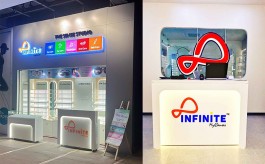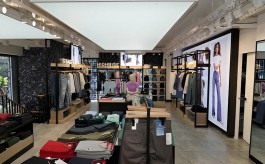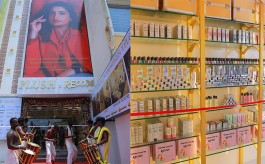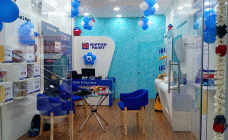Reformat Redesign Regain
By Satarupa Chakraborty | November 15, 2017
For long, growth in retail is suggested by expanding network and increasing the number of stores. Today, with the need for market penetration with higher productivity, retailers and brands have set out to open more stores in new markets with scope for great productivity.
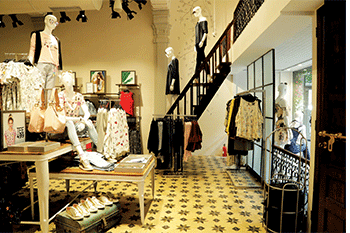 Global retailers and mature retail markets have already seen this. Big box formats like US based Target has been seen to curate store sizes, offerings and design based on store markets they operate in. French brand Sephora has also halved its store size to launch Sephora Studios that use digital intervention to complete their full offerings.
Global retailers and mature retail markets have already seen this. Big box formats like US based Target has been seen to curate store sizes, offerings and design based on store markets they operate in. French brand Sephora has also halved its store size to launch Sephora Studios that use digital intervention to complete their full offerings.
Back in India, retail is on the growth path with many top retailers and brand announcing rapid expansion of their footprints. However, with higher rentals being a nag, space planning strategies have become more serious than ever before. The impact can be seen in two manifestations:
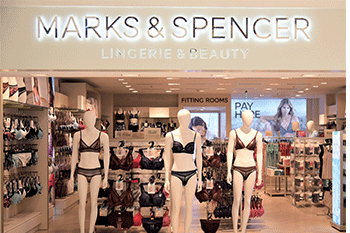 • Many large format stores in high rental retail destinations have been downsized to make way for new international brands.
• Many large format stores in high rental retail destinations have been downsized to make way for new international brands.
• Existing small format stores are being made more compact to be viable to operate in key markets with franchisee partners.
VM&RD takes a look at this scenario in India from the angle of store design and planning, and how it has impacted strategies and implementations in this domain.
Shrinking to grow
British fashion retailer Marks & Spencer (M&S) has consolidated its store 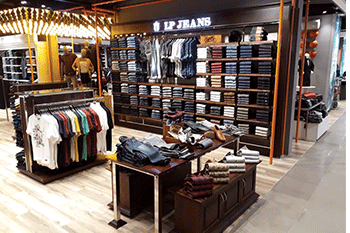 size in India from about 20,000 sq ft to about 10,000 sqft to suit its business strategy of entering prime locations and also penetrating past metros into Tier 2 cities. The updated format has a re-imagined store experience to address new customer expectations. Unlimited (formerly Megamart),re-imagined itself from a factory outlet format to a value fashion one in a reduced size of 18000 sq ft, which was scaled down from 36000 sq ft. The new size has enabled it to be present in high-streets, malls and in Tier 2 and 3 cities. Reliance Trends, poised to take its store count from 400 to 1000 nationwide, has followed the same strategy with a rapid expansion approach.
size in India from about 20,000 sq ft to about 10,000 sqft to suit its business strategy of entering prime locations and also penetrating past metros into Tier 2 cities. The updated format has a re-imagined store experience to address new customer expectations. Unlimited (formerly Megamart),re-imagined itself from a factory outlet format to a value fashion one in a reduced size of 18000 sq ft, which was scaled down from 36000 sq ft. The new size has enabled it to be present in high-streets, malls and in Tier 2 and 3 cities. Reliance Trends, poised to take its store count from 400 to 1000 nationwide, has followed the same strategy with a rapid expansion approach.
Almost all large format stores have either reduced their size or expanded their brands portfolio in the existing space. Retailers like Lifestyle, Shoppers stop, Central and Westside have opened larger stores by adding their group formats, like food, electronics and home, to create one-stopshop shopping destinations. When entering smaller markets, they have sized their stores as per the expected business.
Shrinking to spread
Apart from flagship stores, exclusive brand stores and franchisee stores brands are preferring to set up condensed shop-inshops in the expanding large format stores to reach new markets rapidly. Brands like Allen Solly, Peter England and Van Heusen claim to have as many as 24 different SIS formats for different multi-brand store formats. Even leading retail companies like Reliance Brands and Marks & Spencer have set up SIS formats in multi-brand outlets like Central and Project Eve respectively. Larger electronic formats like Reliance Digital and Croma have opened Express formats to penetrate into smaller catchments offering a curated assortment of personal electronics and accessories.
Shrinking, but does it show?
Does re-sizing a store also mean change in store design and brand imagery? We say, yes and no. Yes, when brands are shrinking to enter into lower tiers of sales or for viable franchising. Typically, brands like Louis Philippe and Aeropostale use different store design materials and propping for A-grade and B-grade cities. Gajpal Rathore, from the VM and Projects team of Aeropostale explained, “While in A-grade stores have ceramic tiles at the entry point, B grade store will use only wood and no tile. Similar other subtle changes will demarcate the difference.” No, as the impact of re-sizing results in the efficient use of floor and wall space. The condensed stores have a smaller proportion of merchandising and display space which is implemented using denser fixturing and layouts. With walls and floors being dense, other architectural design elements are used to add brand imagery. Deepak Jadhav, Head-Project, Globus Stores, explains, “When the size is low, wall space is most important hence we have let go off any feature planned on wall like Nibs which we add to demarcate/highlight a particular area in a big store. We try to use ceiling feature like cove ceiling instead plain ceiling with non-traditional lightings like Chandeliers to focus a particular area. Also, there’s no need to plan a dedicated back office area if it is very small like less than 1000 sqft.”
Supporting the shrink
With varied formats, sizes and design, it’s become mandatory for retail service providers to add and alter their offerings to cater to space management and speed of execution needs that the challenge of space shrinking has opened.
RK Nair, General Manager, Dovetail, explains, “At Unlimited’s reduced store size, in order to save space, we developed something called Technowall, which is basically a glass cladding partition which also doubles up as display unit. We also developed transparent floor fixtures in glass in a way that it gives 360 degree view of the store.”
The increase in number of formats and number of stores has led to increased deliveries and tighter timelines. Top fixture manufacturers have identified three key action points, viz., cost engineering, bulk purchases of raw materials and product engineering that enables plug-and-play. Rahul Khetan, Director, Elemental, said, “The design dynamics is changing almost every day and we are now part of a brand’s retail rollout plan.” Taking cue on faster delivery, vendors like New Delhi-based Espaces retail Fixtures Pvt Ltd are working on modular fixtures that are absolutely plug-and-play.
Following the footstep of fixture manufacturers, many established lighting manufacturers have created lighting solutions that are highly functional, efficient, cost effective and quick to deploy.
Delhi-based Ankur lighting and Bangalorebased RLT, are developing lighting fixtures that are tech-enabled and have more functionalities than just lumen output. Hari Ramachandran, CEO, Retail Light Techniques, explained, “It will be always difficult to engineer a new product faster than concept change of a retail brand. It is more so in a de-regulated lighting industry when cheap price often becomes a benchmark. However, we constantly work on 15%-20% more efficiency and lesser operating expenses.”
Succeeding to shrink
In conclusion, in the scenario of shrinking spaces, the industry recognises the need for collaborative working of the business team, the store design and planning team, the franchisee and the vendors to ensure that brand experience and profitability is delivered to all stakeholders.
THINGS TO KNOW:
- Compared to last year, leasing of retail space in metro malls has rose to 55% during January-September period this year while the supply of space fell by 63% in the first three quarters of 2017 (Source : Cushman & Wakefield).
- Malls are looking for larger tenant mix of diverse brands in the same space often leading to smaller store size.
- Anchor stores in malls have reduce Think Retail India Report).
- The business need for higher penetration in non-metros, efficient inventory management and higher space productivity are the common reasons for downsizing of retail spaces.
- The increase in popularity of franchisee models of retail expansion has reduced the size of formats to achieve lower and viable investments.
- Vendors are upgrading manufacturing efficiencies and value engineering processes to achieve challenging capex targets for large scale rollouts. l Plug-and-play and tech-enabled products (in lighting and fixtures) are getting popular.
- Plug-and-play and tech-enabled products (in lighting and fixtures) are getting popular.

